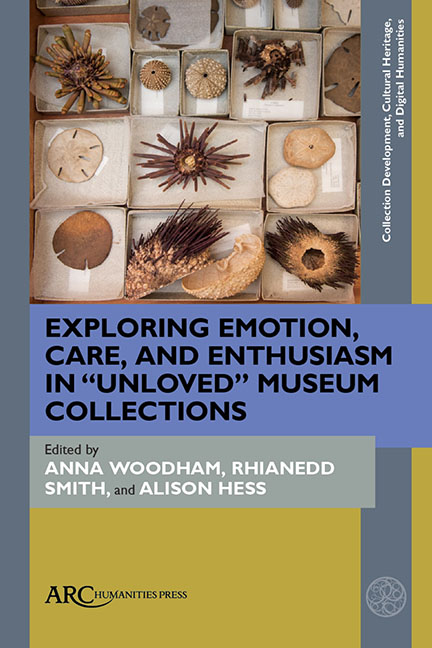Chapter 7 - Emotions and Lost Objects
Published online by Cambridge University Press: 20 November 2020
Summary
MUSEUM OBJECTS, THEIR collection, conservation, preservation, and display, are products, in part, of the Enlightenment concept of the mastery of “man” over creation through his rationality. Museum objects were meant to be seen in order to facilitate knowledge and understanding and thus museum exhibitions offer typologies as way of exposition— so many types of flints, butterflies, or minerals in serried ranks. Alternatively, they are presented with factual information about make, type, accession details, and, occasionally, they are placed in some kind of context so their history and use can be inferred from their juxtaposition to other things. Rarely, however, do they convey information about their emotional significance to the people who owned and collected them. Indeed, museum professionals would omit such information from their files or just not think it important enough to ask the relevant questions from donors, because theirs was a scientific calling, which depended on dispassionate knowledge.
All this is important because it helps to explain why some objects and collections are just so dull. I know as a former museum professional and practitioner that I should not say this, but, to be frank, those of us who work in museums know that there are boxes of collections, items in drawers, things in corners that we are just not interested in. If we are not interested in them, why should the public be? Part of the reason, I suggest, is because they have become stripped of their emotional connotations. Susan Pearce wrote recently that “[F] or humans, one of the principle ways in which objects acquire special powers is the strength of feeling, which has been poured into them.” Pearce offered three categories by which emotional connections to objects could be understood. A personal, individual reminder of something, which is more than just a factual event— this she calls souvenirs. When objects have emotional meanings for more than one person then they become heirlooms, and when they are emotionally important for communities of any kind, they become icons or relics. However, these words compress within them a range of emotional meanings that can be concealed by this nomenclature. Is a souvenir a reminder of something happy or sad or both? Do all individuals in a community feel the same way about objects that are heirlooms for some?
- Type
- Chapter
- Information
- Publisher: Amsterdam University PressPrint publication year: 2020

